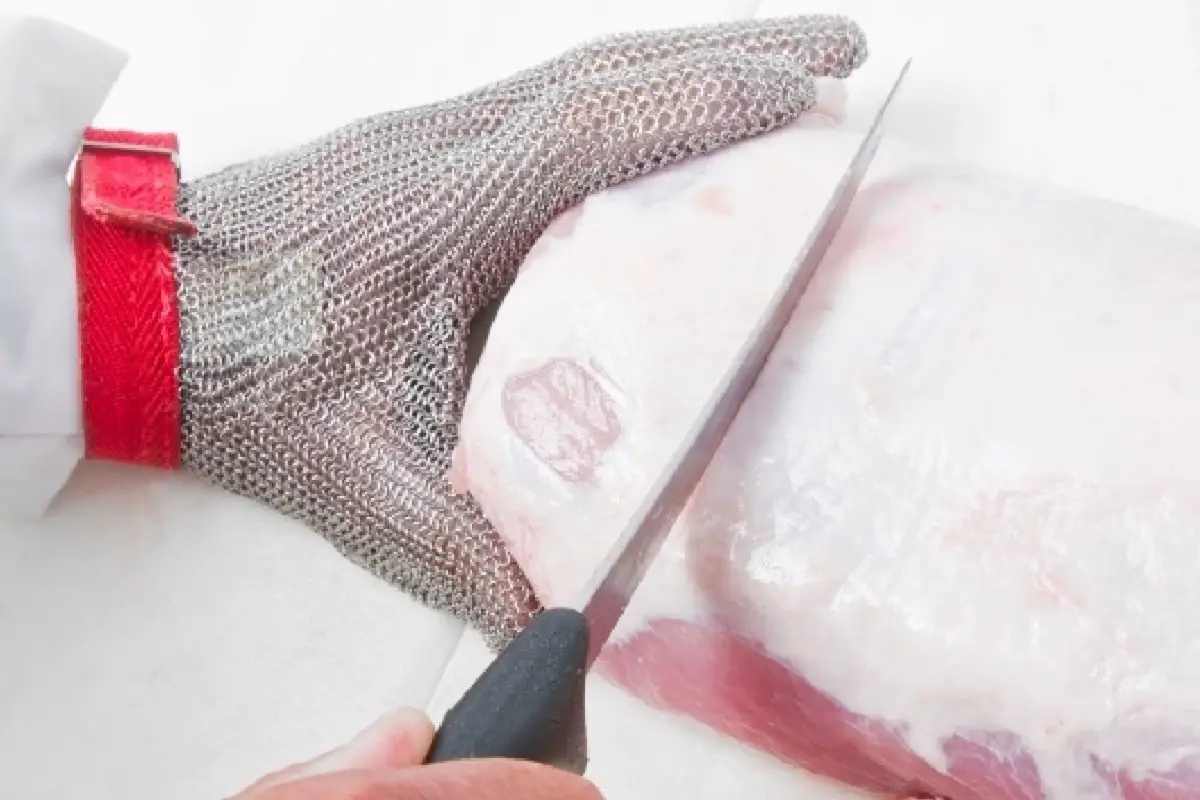Hand protection is important to wear for workers in all industries, including construction, automotive, plumbing, and manufacturing. You might also think of wearing cut-resistant gloves to prevent serious cuts even at home on DIY tasks. But do they actually work? Find out below.
How Cut Resistant Gloves Work
Cut-resistant gloves are important to wear during certain tasks because they help to provide hand protection from cuts, both minor and major. Many gloves offer cut resistance, but not all hand protection products provide the same level of cut protection.
Several other features are included with cut-resistant gloves that enhance their ability to provide protection. For example, along with being cut-resistant, they are also usually very abrasive resistant, puncture-resistant, and resistant to heat. This is all due to the types of fabrics they use, such as steel mesh, kevlar, leather, or even graphene.
For more about cut resistant glove fabrics, see our post Materials Used In Cut Resistant Gloves.
Do Cut Resistant Gloves Prevent Punctures?
Yes, cut-resistant gloves prevent punctures by sharp objects and tools under varying force. This is based upon how much weight atop a blade they can withstand before being pierced.
This quality, along with others is tested by standards organizations including the American National Standards Institute (ANSI), the International Safety Equipment Association (ISEA), and The European EN standards (CEN, CENELEC, or ETSI).
For more information on puncture resistance in cut-resistant gloves, see our post Cut Resistant Glove Levels.
Checking For Cut Resistance Testing
Many brands of cut-resistant gloves will advertise how strong their cut resistance gloves are. For instance, the package may read “5 times stronger than leather” or “strongest material on the market”.
While this may be true, to be sure check if the gloves have been tested to meet the proper safety standards for cut resistance. There are standardized tests that use specific cutting machines to test fabrics and materials for resistance to cuts, punctures, and flame.
Are Cut Resistant Gloves Safe For Food Handling?
Cut-resistant gloves are actually ideal for food handling, such as cutting, slicing, and peeling food in the kitchen. They can also be used outdoors for fish scaling, filleting, boning, or oyster shucking.

Cut-resistant gloves are usually labeled “Food Grade” if they meet certain requirements. These are best for anyone who wants to keep their hands safe while working in the kitchen or for butchers, and seafood workers who routinely work with knives.
Many people have an annoying (and painful) tendency to cut themselves while cooking. But there is no escape because who will cook in your place? The solution is cut-resistant gloves which can give you peace of mind while you prep your meals.
Comfortable and flexible cut-resistant gloves will help you grab the knife and cutting board easily and with a firm grip. All this confidence will allow you to get the meal cooked more quickly and safely.
For more information on when to wear cut-resistant gloves, see our post When Should You Wear Cut Resistant Gloves?
Popular Uses For Cut Resistant Gloves
There are many cutting tools that are ideal for wearing cut resistant gloves, including:
- Using mandoline slicers (cutting and grating tools)
- Knives
- Cutters
- Graters
- Peelers
- Woodworking
- Police duty
- Carving
- Carpentry
- Oyster shucking
- Meat cutting
Brands Of Cut Resistant Gloves
- Dowellife
- Convy
- NoCry
- Twinzee
- Schwer
- KAYGO
- DEYAN
- Quest Protective Apparel
- Glove Station
Cut Resistant Glove Materials
Cut resistant gloves come in a variety of materials which gives wearers a range to choose from. Some materials include:
- Stainless steel mesh or wire
- Kevlar
- Graphene
- Glass fabric
- Thermoplastic Rubber (TPR)
- Polyethylene
- Spandex
For more on cut resistant glove materials, see our post Materials Used In Cut Resistant Gloves.
The Comfort of Cut Resistant Gloves
For cut-resistant gloves to be functional and wearable for extended periods of time, they need to be both durable and breathable. Make sure to only purchase a pair of cut-resistant gloves that will provide you with the most comfort while you work.
Limitations of Cut Resistant Gloves
In reality, no glove is entirely cut-resistant, so there are limitations to how much protection they can offer workers. In fact, cut-resistant gloves can convince anyone wearing them they can do more than they can without getting cut. This is a false sense of security and can lead to some serious cuts of the hands.
For instance, directly poking or slicing the glove with a very sharp knife could cut through the cut-resistant materials. However, what cut-resistant gloves can do is keep any cuts or lacerations to a minimum that may only need a bandaid to treat instead of a trip to the emergency room.
So, do cut-resistant gloves work? The answer is Yes. Since there are standards for cut-resistant gloves that determine how well they work, it is best to only buy gloves that meet them. The best types are those that offer maximum cut protection and functionality. It is advisable to only choose a pair that is made from durable and high-quality materials that will last for many uses.

